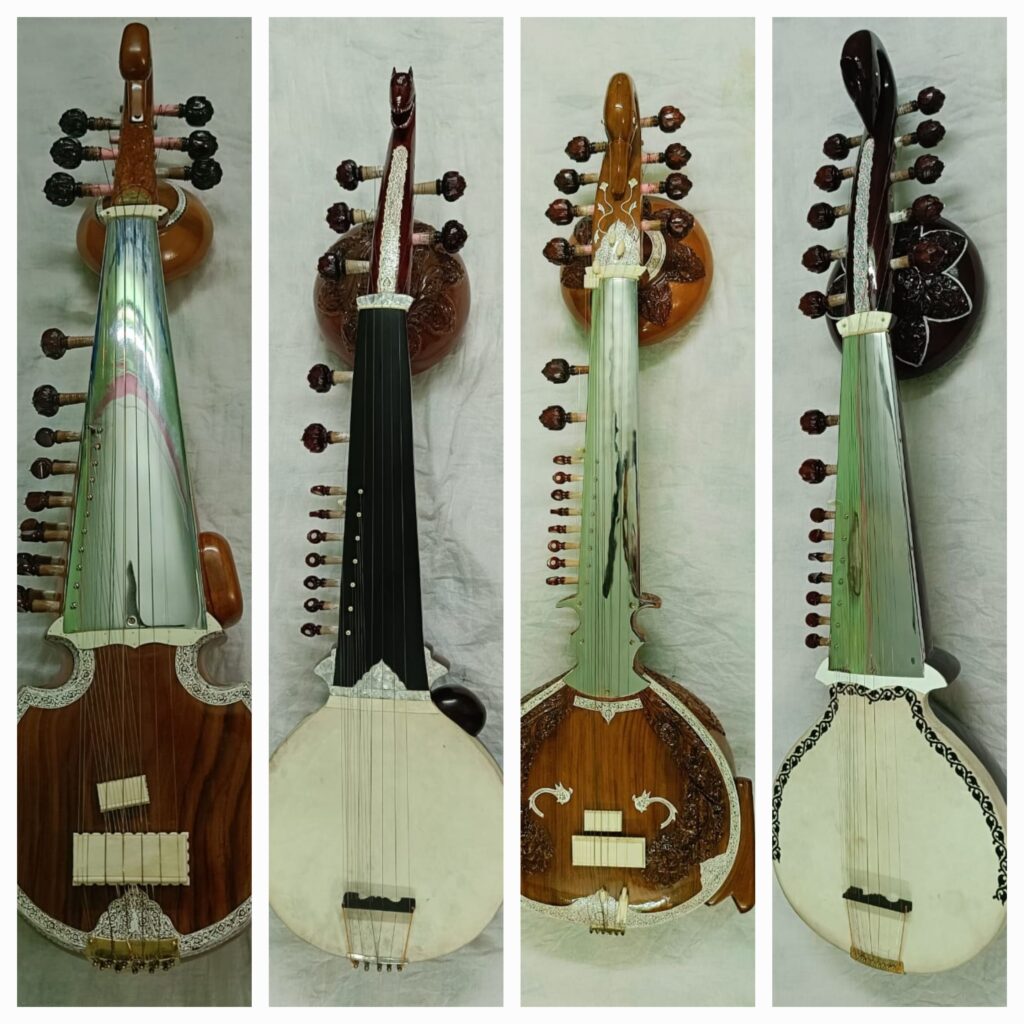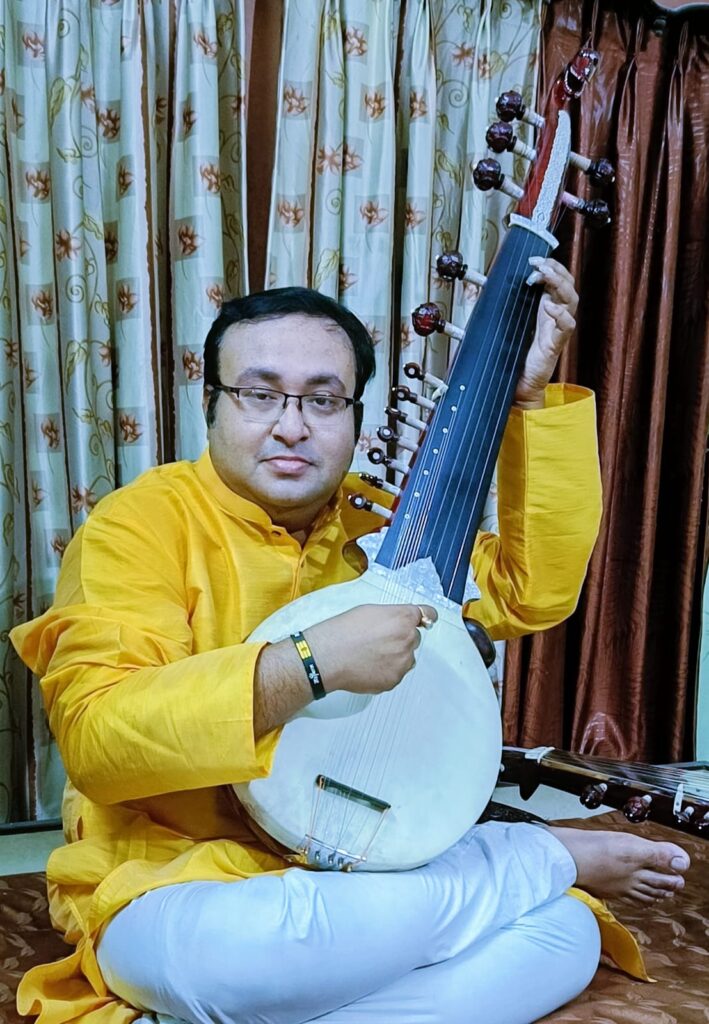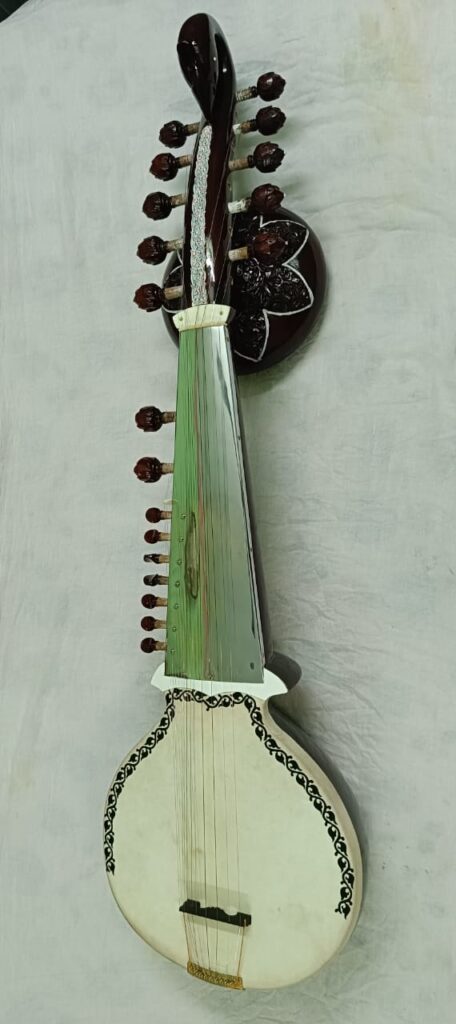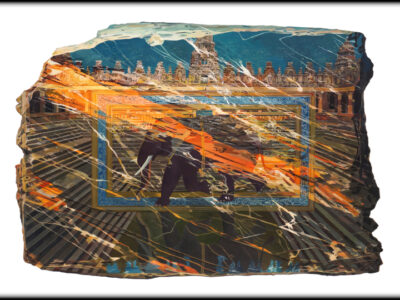Tanseni Rabab and Sur-Rabab –
The revival of these Indian classical Music intruments was made possible by Joydeep Mukherjee, who traced their historical roots back to Tansen
In the 16th century, Miyan Tansen, one of the greatest musicians in Indian history, graced the royal court of Akbar. Among his many contributions to Hindustani classical music was the creation of the Tanseni Rabab. Originating from the Afghani Rabab introduced to India by the Mamluk and Khilji dynasties in the 13th century, Tansen adapted this folk instrument to play Indian ragas, creating what was initially known as the Dhrupad Rabab or Seni Rabab. After his death, it became famously known as the Tanseni Rabab, a symbol of royal musical heritage for over 250 years until it was gradually overshadowed by the Sursingar in the 18th century.
Fast forward to the late 19th century, another significant innovation occurred. Ustad Abdullah Khan of the Senia Shahjehanpur Gharana combined the Tanseni Rabab and the Sursingar to create the Sur-Rabab. This instrument, a blend of the best qualities of both its predecessors, became prominent during Khan’s time but eventually faded into obscurity following his death.
The Challenge of Reviving Extinct Instruments
In recent times, Joydeep Mukherjee, a sarod player and grand disciple of the legendary Pandit Radhika Mohan Maitra, embarked on a mission to revive these nearly extinct instruments. Pandit Maitra, a multi-instrumentalist and zamindar of the Raj Shahi estate, had made significant contributions to Indian classical music, including creating the Mohanveena, Dilbahar, and Nabadeepa. However, following Maitra’s death in 1981 and his retirement in 1977, the instruments he popularized, along with the Tanseni Rabab and Sur-Rabab, saw a sharp decline in their presence on the concert stage.

Mohana Veena, the newly revived Tanseni Rabab, Sursingar and Sur- Rabab
Reviving the Tanseni Rabab and Sur-Rabab
Mukherjee undertook the task of reviving the Tanseni Rabab by conducting thorough research into its structure and sound. He made several modifications to enhance its performance:
Strings: Replaced traditional catgut strings with bronze and copper wires for durability and improved sound.
Fretboard: Used rosewood instead of the traditional wooden fretboard for better tonal quality.
Bridge: Swapped the ivory bridge for ablush wood, respecting contemporary ethical standards.
Resonance: Added sympathetic steel strings to increase resonance.

Joy Mukherjee with Tanseni Rabab
The revival of the Sur-Rabab involved similar attention to detail and innovation:
Bridge: Utilized ablush wood instead of ivory for the bridge.
Strings: Included chikaris and sympathetic strings to enhance resonance.
Material: Crafted from a 100-year-old seasoned mahogany wood block for a light, sweet, and deep tonal quality.
Design: Incorporated a peacock head for aesthetic appeal and cultural significance.

Sur-Rabab
Mukherjee’s revival efforts were greatly supported by institutions such as the Ministry of Information & Broadcasting (Prasar Bharati) and the Sangeet Natak Akademi. Through these connections, he accessed valuable archival recordings and videos of past masters, providing crucial insights into the original sounds of these instruments.
This project caught the attention of key figures, including the Honourable Prime Minister Narendra Modi, who praised Mukherjee’s work on reviving the Sursingar during the 98th edition of his radio program, Mann Ki Baat, in February 2023. The recognition didn’t stop there; Mukherjee was also awarded the prestigious Ustad Bismillah Khan Yuva Award by the Sangeet Natak Akademi in 2023.
With the successful revival of the Tanseni Rabab and Sur-Rabab, Mukherjee aims to bring these instruments back into the mainstream, ensuring their appreciation by contemporary audiences. He continues to popularize other instruments like the Sursingar and Mohanveena, following in the footsteps of his Guru, Pandit Maitra. Mukherjee’s vision is to make classical music accessible and engaging for today’s youth, ensuring that the rich heritage of Indian classical music is preserved and celebrated.
















